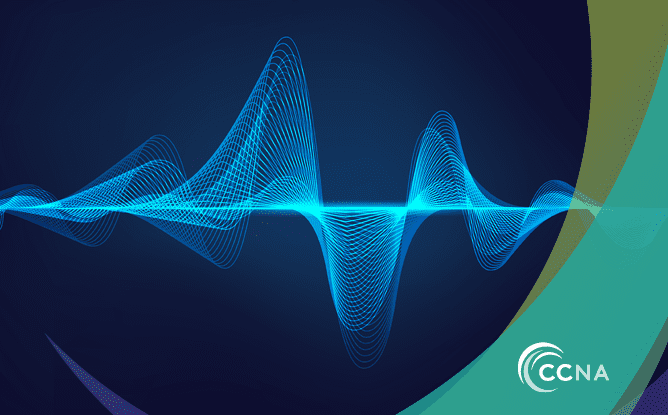
Voice analytics is usually introduced in a Contact Centre environment to improve customer experience. But how does voice analytics improve CX? To answer this, we need to examine four main areas, namely; data mining, routing calls, marketing campaigns and quality management.
Data mining
The first aspect of improving CX with voice analytics is with data mining. If you have a contact centre, it most likely handles hundreds or even thousands of calls daily. Each conversation contains essential information that can help you establish what works and what doesn’t. Luckily, with voice analytics software, unlocking that information is simple. Voice analytics enables you to analyse voice data without the need to review call transcripts individually.
Voice analytics solutions will employ a speech recognition engine, which differentiates between different parties on a call – as well as collecting valuable and insightful data based on the emotions and other non-verbal triggers. If you can pick up a customer’s pain points and positives, you can find issues before they become complaints, and get a head-start on improve your CX proactively.
Routing calls
Voice analytical software takes customers’ time into account: nobody likes being on hold too long or passed on to the wrong department. Understanding why your customer is calling can help you save them time by putting them through to the right department. Customer Voice analytics data is perfect for this as it is used to intelligently route clients to the correct location, department, or agent.
Intelligently routing calls saves hold times and reduces the amount of overall time between when a call is placed, and a solution is reached. If you can minimise the time a customer spends on the phone, you will improve their experience.
Marketing campaigns
Understanding customer demographics is crucial to improving overall customer satisfaction. The ability to understand your customers will help you build a more cohesive marketing campaign, targeted at specific audiences. Analysing voice data presents an opportunity to track important demographics, thus, influencing your marketing tactics to better fulfil your customers wants, needs, and expectations.
Quality management
The aspect of quality management looks at the quality of an agent’s performance and how it affects a customer’s happiness, satisfaction, and overall CX.
With voice analytics data, it is simple to monitor, measure and track how your agents are handling various situations. The information you gain can assist in altering how agents respond to customer’s, thereby changing how you make decisions to improve the CX and make it better. The benefits of voice analytics are immense but are they the same as speech analytics, and if not, what’s the difference?
Speech analytics vs voice analytics

Speech analytics software is popular among call centre managers. The transcribing of agent and customer interactions, from the phone into a text document, is useful to access an agent’s performance. The majority of speech analytics programs analyse phonetics, identifying syllables and specific keywords for analysis. The number of vocabularies in systems differs, but the systems with a more extensive vocabulary provide a complete transcript of the call.
Although generating reports is fast and efficient, when it comes to analysing the report, it can be time-consuming. Agents base their analysis on words without context as they do not know the speaker’s emotional state. Frustration and inaccuracy can mount due to the lack of context.
Additionally, limitations exist in the Word Error Rate (WER) in transcribing speech to text, and this varies depending on the language, and dialect agents and customers are using. Think about the confusion speech analysis may have with English homophones (there, their, and they’re), as well as slang words.
Due to the limitations of speech analytics, many call centre agents use it for compliance purposes.
Voice analytics programs also analyse recorded conversations. However, the program takes it a step further examining vocal elements such as syllable emphasis, tone, and pitch to analyse a speakers behaviour instead of focusing on phonetic pronunciations. It can also identify if an agent is using an aggressive or rude tone, thereby identifying issues and improving CX and agent performance. The raw vocal data is run against an emotional voice database to identify and classify the emotional state of the speaker. Due to this, the result is less confusion and misinterpretation saving time and labour, in addition to determining a future speaker’s behaviour.
How voice analytics can improve your customer experience

The advantages of voice analytics technology are immense to improving many aspects of your business, especially your CX. Forget countless hours sifting through manual call analysis. Voice analytics is quick and easy, saving you time and money and helping you improve your overall customer interactions and relations. Thus, impacting your ROI. Data based voice analytics enable organisations to identify customer issues, increase the number of problems they solve, shorten call times, and increase the overall quality of their product or service. The combination of voice analytics with AI will analyse customer conversations while providing prompts in real-time of how to handle certain aspects of the call. If a customer is becoming annoyed or upset, the system may prompt the agent to transfer the call to their supervisor. Alternatively, if the system picks up that the customer is open to the idea of other products, the agent may get a sales script that they can relay to the customer.
So, it is little wonder why millions of businesses use voice analytics to improve their contact centre CX.
Are you and your company ready for voice analytics to drive your contact centre CX? Visit our contact centre services for more information on how you can use voice analytics and improve the CX of your contact centre.

